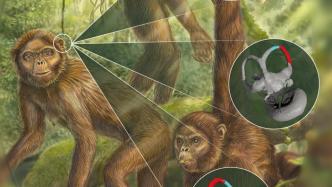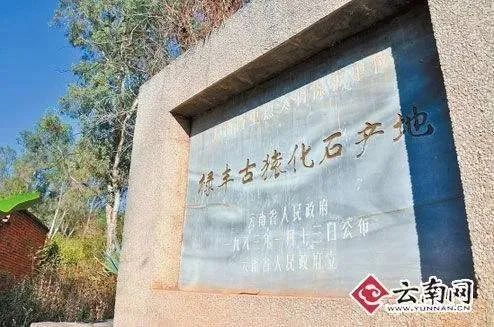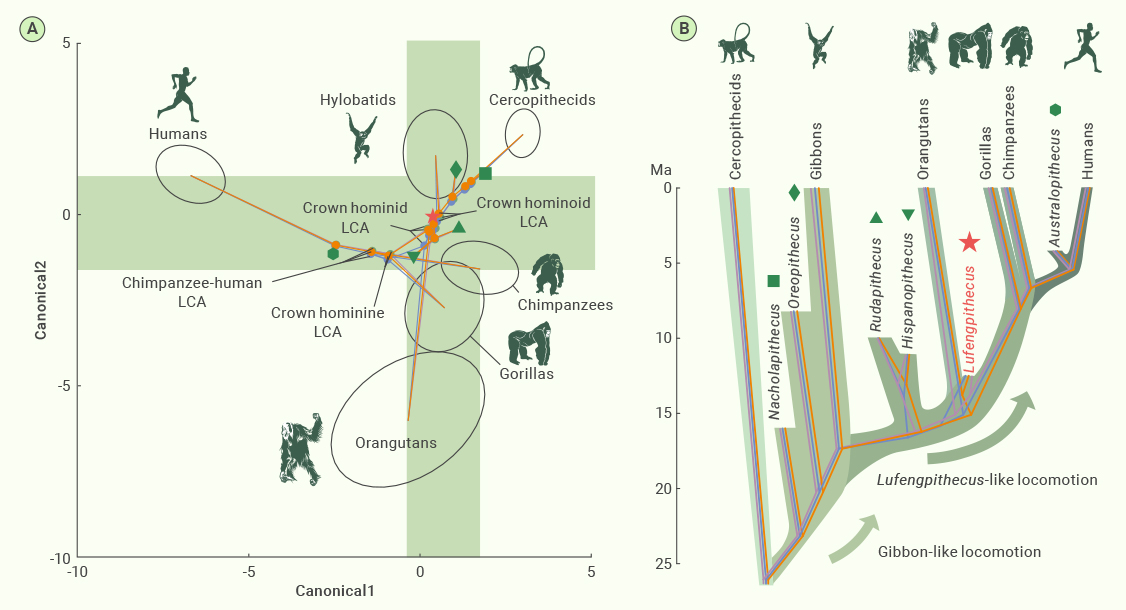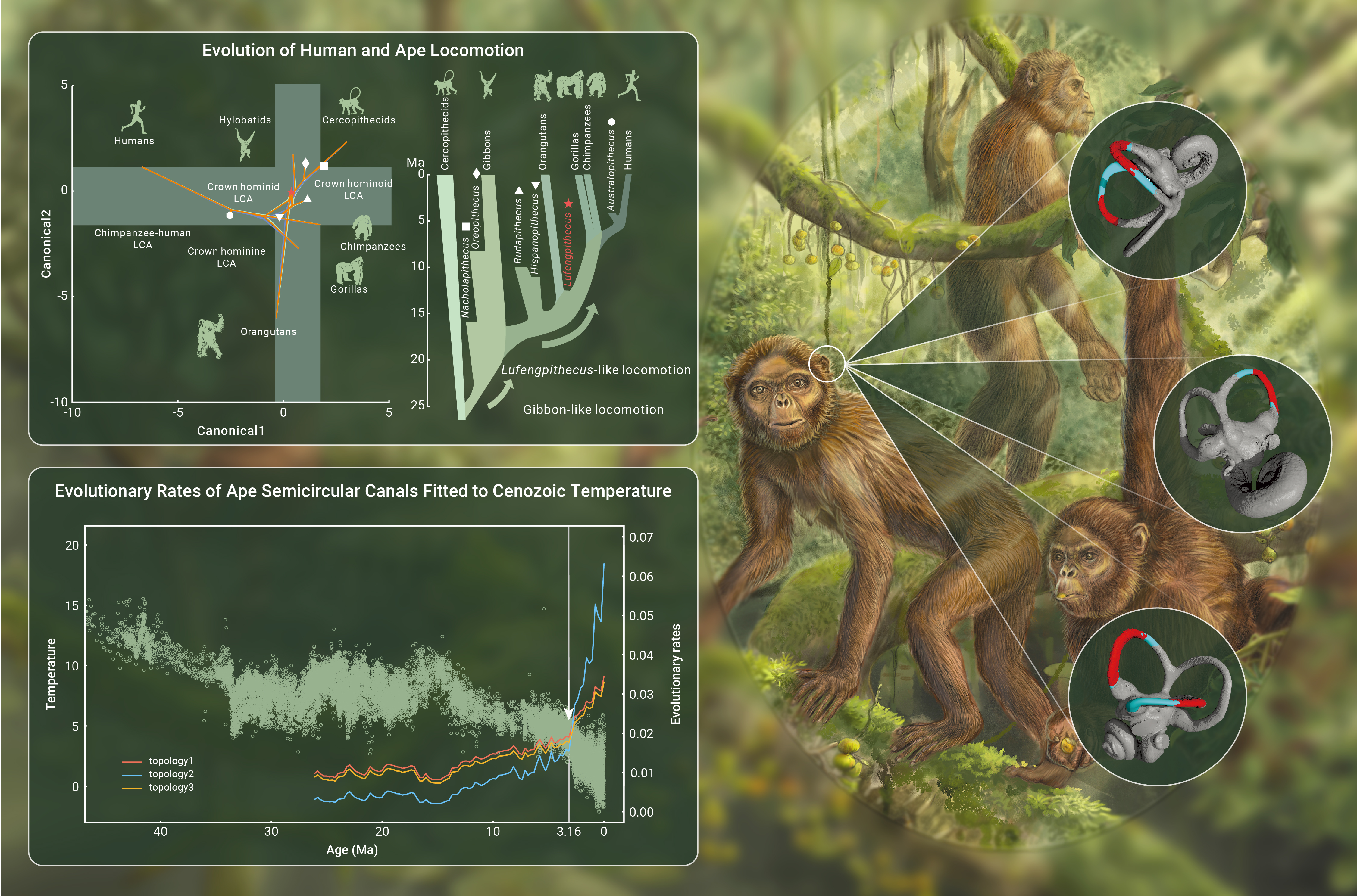
For centuries, people have wondered: How did human bipedalism evolve? In particular, when did human upright walking originate?
Based on the study of the semicircular canals of the fossil inner ear, the research team of Ni Xijun and Li Qiang from the Institute of Vertebrate Paleontology and Paleoanthropology of the Chinese Academy of Sciences, together with researchers from New York University and the Yunnan Institute of Cultural Relics and Archeology, proposed that human upright walking may have originated from Lufeng hominin-type locomotion. Way. Recently, related papers were published online in the international academic journal "The Innovation".

Yunnan website data map of the origin of Lufeng hominin fossils
During the late Miocene, 12.5 million to 6.2 million years ago, Lufengpithecus lived on the southeastern edge of the Qinghai-Tibet Plateau. Its fossils have been found in Kaiyuan, Yuanmou, Lufeng, Zhaotong and Baoshan in Yunnan.
On February 6, Dr. Zhang Yinan, the first author of the aforementioned paper, told The Paper that current research on primates, rodents, and some reptiles have shown that the shape and size of the semicircular canals are strongly related to the animal’s mode of movement. sex. The data collected by the research team on living apes also show that apes with different movement methods have different semicircular canal shapes. Chimpanzees and gorillas, which have similar locomotion patterns, have similar semicircular canal morphologies.

Discriminant analysis and the evolutionary history of ape locomotion. The research team concluded a three-stage model of the evolution of ape locomotion. From the Lufeng hominin-type locomotion, early humans represented by Australopithecus apes evolved to bipedal locomotion.
From 1975 to 1983, the Institute of Vertebrate Paleontology of the Chinese Academy of Sciences and the Yunnan Institute of Archaeology jointly excavated multiple skull fossils of Lufeng hominid near Shishiba Village in Lufeng County, which became an important basis for studying the evolutionary relationship between humans and apes and attracted widespread attention from the international academic community. However, previous researchers thought the fragile semicircular canals were not preserved.
The research team used the multi-scale multi-modal comprehensive imaging platform of the Key Laboratory of Vertebrate Evolution and Human Origins of the Chinese Academy of Sciences to conduct in-depth research on the skull of Lufengpithecus discovered more than 40 years ago and rediscovered the skull that was squeezed into the cranial cavity. The fractured and deformed petrous bone was used, and through the image processing process independently developed by the team, the fine structure of the inner ear labyrinth including the semicircular canals in the petrous bone was reconstructed.
The research team concluded a three-stage model of the evolution of ape locomotion. Early ape trunk groups moved in trees in a manner similar to the way Asian gibbons move today; later, the last common ancestor of apes and humans was similar in movement to Lufeng ape; finally, from Lufeng hominin type Early humans, represented by Australopithecus apes, evolved to bipedal walking.

The ecology and inner ear restoration of Lufengpithecus (right picture). Studies including primates, rodents and some reptiles have shown that the shape and size of the semicircular canals are strongly related to the animal's movement mode.
Researchers infer that the locomotion method of the Lufeng hominid type may be a comprehensive locomotion method that combines swinging, quadruped climbing and upright walking, and is a relatively primitive transitional form.
In order to further explore the reasons for the divergence of apes' movement styles, the research team calculated the evolutionary rate of semicircular canal morphology and fitted it with the Cenozoic sea surface temperature. The results show that the evolution rate is negatively correlated with temperature and suddenly accelerated around 3.2 million years ago. This period coincided with the expansion of the Arctic ice sheets and a drop in global temperatures. The research team believes that the decrease in global temperatures may have promoted the evolution of human and ape movement methods and led to the specialization of their different movement methods. Due to the impact of the uplift of the Qinghai-Tibet Plateau, today's Yunnan-Guizhou area maintained a forest environment for a long time during the Miocene, creating a refuge-like living environment for Lufeng Hominin, which saved it from the European forest ape-like extinction. disaster. Less selective pressure led to a lag in the evolution of locomotion in Lufengpithecus, thus retaining many of the characteristics of the ancestral state of great apes and human lineages.